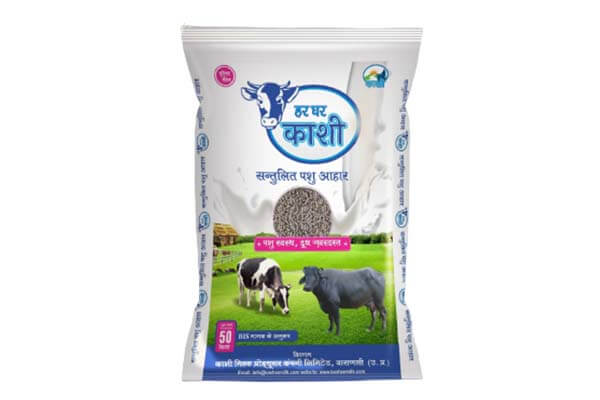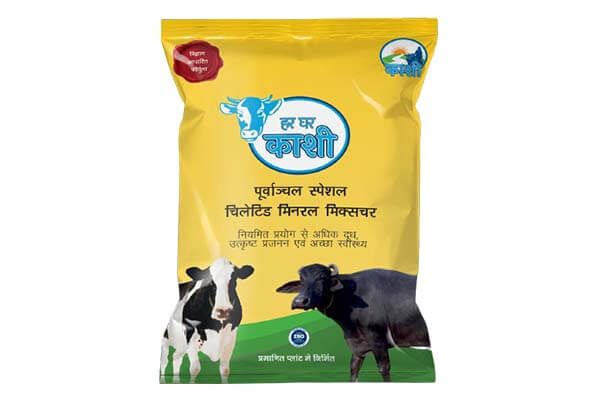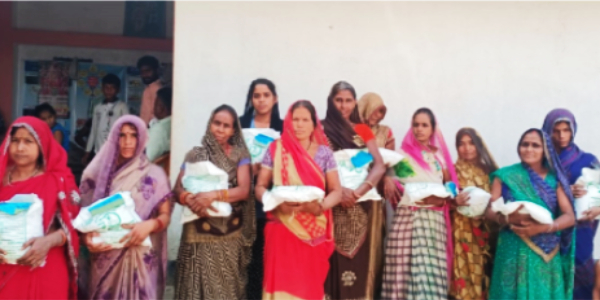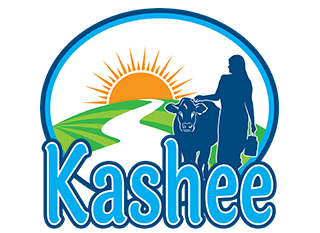Balanced Cattle Feed

In order to increase the milk yield of the milch animals and also simultaneously improving the income of the farmers, offering quality feed is utmost important. Every lactating cow requires a proper diet and proper management to improve the health and nurture the animal. With this objective, the Balanced Cattle feed (Without Urea) under the brand name ‘Har Ghar Kashee’ has been launched for milk producer farmers. The Cattle Feed bag is full of nutrients, minerals, and required nutrients which makes it very useful and beneficial at the best price.
Specifications of BIS Type II
Poorvanchal Specific Chelated Mineral Mixture

Cows and buffaloes require essential dietary elements like minerals for better health, growth, and healthy reproduction. Chelated Mineral mixture has been designed as a free-flowing powder which helps build immunity and reduce infertility among the cattles. Mineral deficiency results in poor growth, decrease in milk yield and immunity, and reproductive disorders. Since the practice of mineral supplementation is not common in various parts, therefore area specific MM has been launched as an aim to meet the requirements of the dairy cattle.
Fodder Seed Distribution

Green fodder is an important component in dairying as it is a highly nutritious and cost-effective feed for dairy animals. It plays a vital role in providing essential nutrients to the animals, which helps in their growth and development. Additionally, green fodder is an excellent source of energy, which helps in increasing the milk production of dairy animals.
Green fodder is also rich in vitamins, minerals, and protein, which makes it an ideal feed for dairy animals. It is a cost-effective option for dairy farmers as they can grow it easily on their farms, which reduces their dependency on expensive feed supplements. Another significant benefit of green fodder is that it helps in improving the reproductive performance of dairy animals. The phytoestrogens present in green fodder can enhance the reproductive system and reduce the incidence of reproductive disorders in cows.
Moreover, green fodder is a natural and healthy feed that can reduce the incidence of health issues in dairy animals. It contains high levels of fiber, which helps in maintaining a healthy digestive system and preventing digestive disorders.
In conclusion, green fodder is a vital component in dairying as it provides many benefits for dairy animals, including improved health, milk production, and reproductive performance. Dairy farmers should ensure that their animals have access to fresh and nutritious green fodder throughout the year to maximize their productivity and profitability. By incorporating green fodder in their feeding program, farmers can improve the overall health and well-being of their animals, while also reducing their cost of production.
Rabi Fodder – The major Rabi crops include cereals like Mustard, Barley, Berseem, Makhan grass, Wheat and vegetables such as Potato, Lady finger, Peas, Cabbage, Spinach.
Kharif Fodder – The major Kharif crops are Sorghum, Jowar, Maize, Millet, Soyabean and vegetables like potato, bitter gourd, sugarcane, ragi, French beans, watermelon, muskmelon.
Silage making
Silage is an essential component of modern dairy farming. It is a fermented, high-moisture feed that is made from crops such as corn, alfalfa, and grasses. Silage is an effective way to preserve forage, and it provides a consistent source of nutrition for dairy cattle throughout the year. It also has a high energy and protein content, making it an excellent source of nutrition for lactating cows. Additionally, silage reduces the risk of feed spoilage and wastage, and it helps farmers to optimize feed management and reduce feed costs. Overall, silage is a critical component of a successful dairy farming operation, and it plays a vital role in ensuring the health and productivity of dairy cattle.
To promote silage making among smallholder dairy farmers, Kashee promotes “Silage Making in Bags”. For that purpose, dairy farmers are being trained through demonstrations by adopting the “Learning by Doing” approach. They are being trained to start from crop selection, sowing, stage of harvesting, chaffing, and ensiling.
The results are encouraging.





